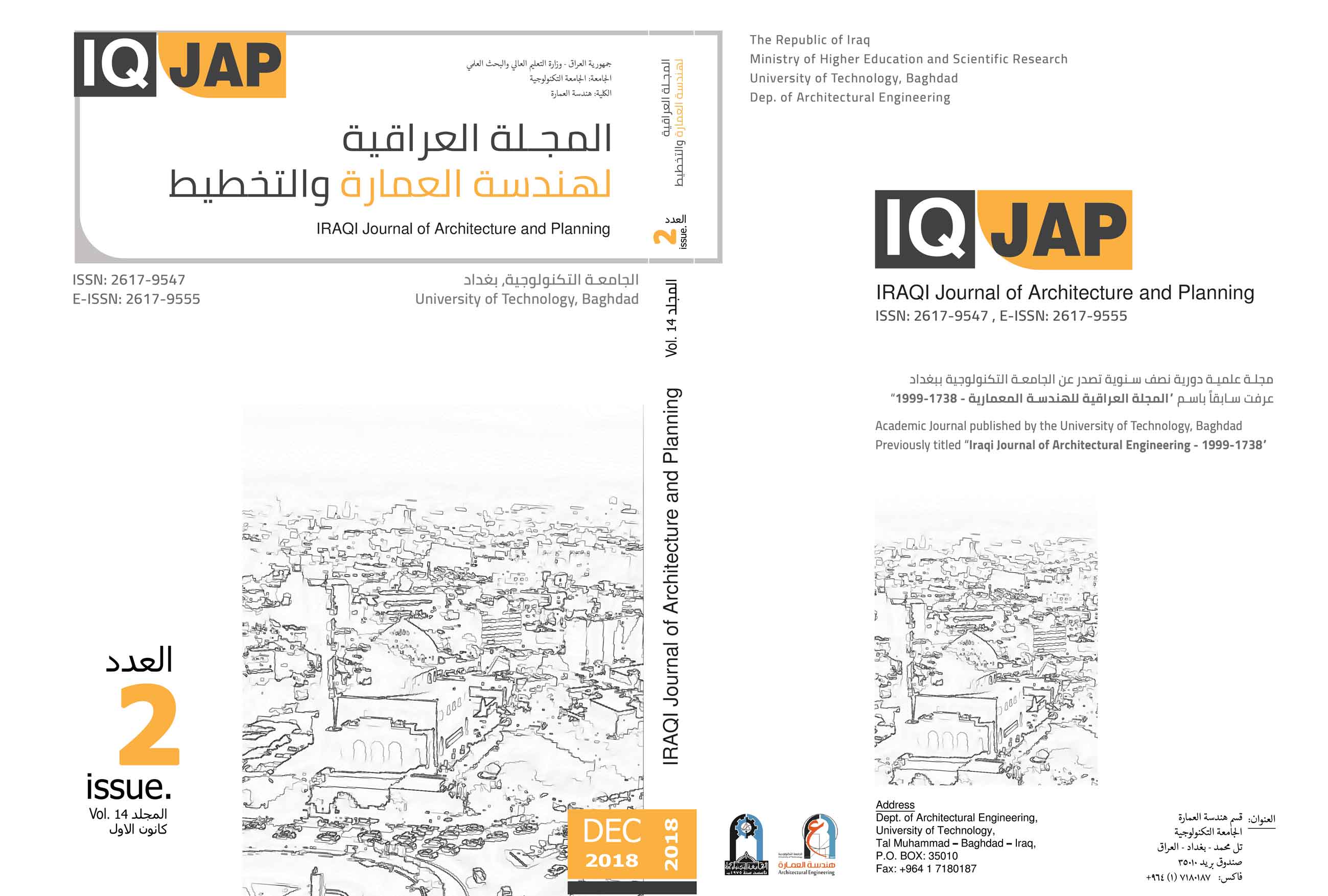The Schematic Thought of Cities beyond the Hermann Theory
Abstract
The research focuses on one of the important theories on the human brain, how to understand the nature of human thinking and predict its behavior, Hermann's theory, by introducing a new philosophical vision,
looking for the center in Herman's model, Called the inner senses as adopted by the philosopher Ibn Sina.
Thus, the research problem summarized as follows: the absence of a center in Hermann's model of organizing and coordination between the four parts of his brain that he proposed. The research adopted the hypothesis that there is a close relationship between the inner senses as proposed by Ibn Sina
and Hermann's model, To the supposed center of this model), and the research aims through this proposal to find new symbolic forms developed model Hermann show the presence of the center and reflect the state of dynamism and change that characterizes the brain.
The study found that the sense of "force" of common sense represents the center in the Hermann model, while the imaginary (pictured) represents part A, the image represents the creative part D, the illusion represented the part C, and the memory (the clipboard) represents part B.
The study examined four models of cities in which different ways of thinking used, in which a certain part of the brain was clearly dominated by the four parts. However, the research found that despite the dominance of a particular part, there is a role for other parts but in varying proportions. The four parts are (common sense) which called in our research (human integration) which is the supposed center of the brain.
Downloads
References
Bawal, Muhammad, 2011;'From the imagination to the imaginary/A study in the historical concept', Al-Wahat Magazine for Research and Studies, No. 13, Algeria.
Dr. Mohamed Othman Najati, 1980: "Sensory perception at Ibn Sina", Dar Al Shorouk, Beirut.
Dubroz, Ann, 2015;'Brain Hidden', Translated by: Zeina Dehebe, First Edition, Riyadh.
Mustafa Heilat, 2015;' Hermann measurement of thinking patterns', Dar Debono Publishing, Distribution and Printing.
Salah bin Yahya Hood Abdul Jalil, 1373 Hijri;'Hermann Theory Workshop', Gifted Care Center, Ministry of Education, Saudi Arabia.
Dr.Wissam Salah Abdul Hussein,2015;'Learning in harmony with the brain (applications of brain research in learning)', Scientific Book House,Beirut
A. Afifi, Pro.Ahmed Kamal El-Din, 1996;'Theories of Urban Planning', Al-Azhar University.
Wahhabi, Abdul Rahim, 2005;'Attending Poetry in the Philosophical Perspectives of Muslim Philosophers', Magazine thought&Criticism (Fikr WA Nikd), No. 67, March.
DeWald, R. E. (1989). Relationships of MBTI types and HBDI preferences in a population of student program managers', PhD dissertation, Western Michigan University.
Broadbent, Geoffrey, 1990;'Emerging Concepts in Urban Space and Design', blisher: Taylor & Francis Routledge.
Hall, Peter, &Tewdwr, Mark, 2002;'Urban and Regional Planning', Routledge, Taylor & Francis Group, London and New York, fifth edition.
Lewis, John, 2014;'Preserving and Maintaining the Concept of Letchworth Garden City'. Journal Planning Perspective, Volume 30, 2015 - Issue 1
https://www.news-medical.net/health/Development-of-the-Nervous-System-(Arabic).aspx.
Copyright (c) 2019 Tuqa Raad Alrobaee, Ibrahim Jawad Al Yousif

This work is licensed under a Creative Commons Attribution-ShareAlike 4.0 International License.
You are free to use the work, but you have to attribute (refer to) the work in the manner specified by the author or licensor (but not in any way that suggests that they endorse you or your use of the work).
IRAQI J. ARCHIT & PLANN grants you the right to publish the metadata of the journal, it's issues and articles under the terms of the Creative Commons Attribution-ShareAlike 4.0 International License.
Author(s) hold the copyright of their aricles without restrictions. However, IRAQI J. ARCHIT & PLANN holds publishing rights for articles and their revisions once the article is published.
Authors can archive pre-prints (ie pre-refereeing) and post-prints (i.e. final draft post-refereeing) versions of the work they submitted to IRAQI J. ARCHIT & PLANN using non-for-profit open-access servers whether on author's personal website and/or institutional repositories including the university or research center where the author work.. For post-prints, only the IRAQI J. ARCHIT & PLANN’s as-published PDF version is permitted and the published source (IRAQI J. ARCHIT & PLANN’s website) must be clearly acknowledged within the archiving webpage.






